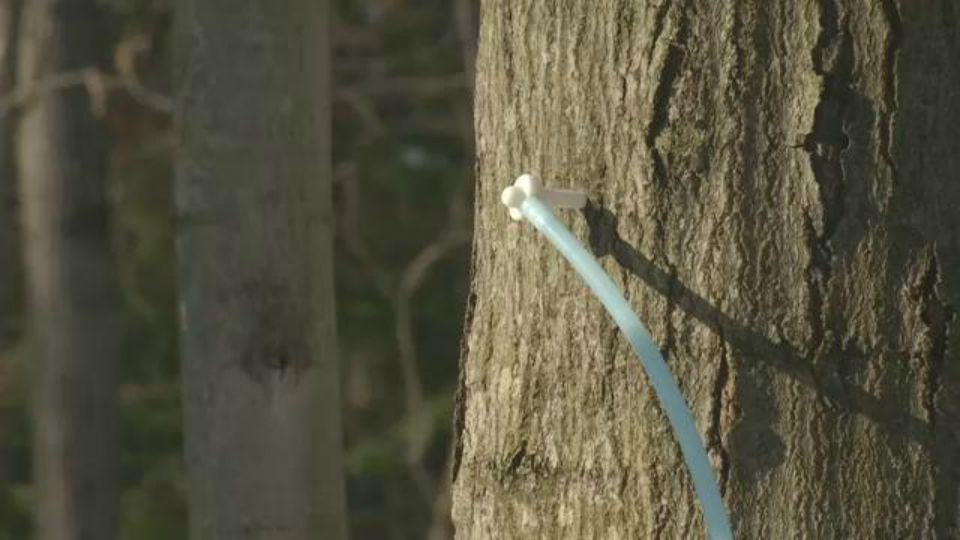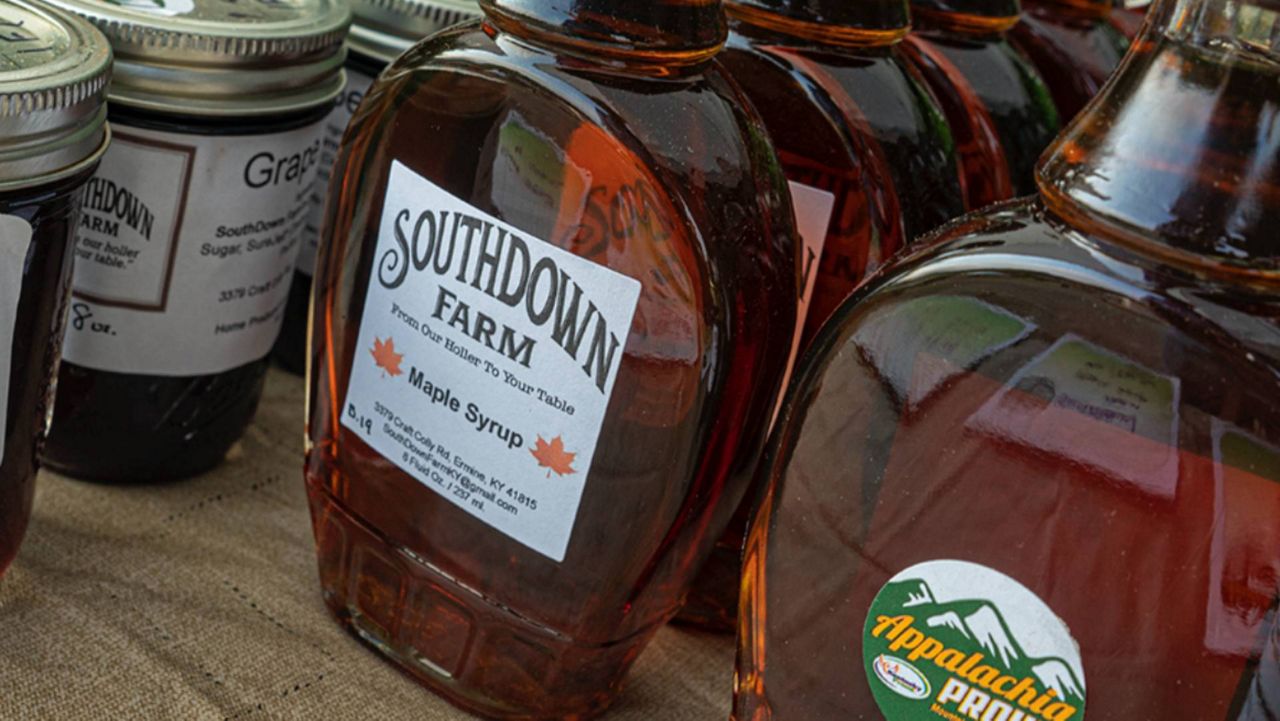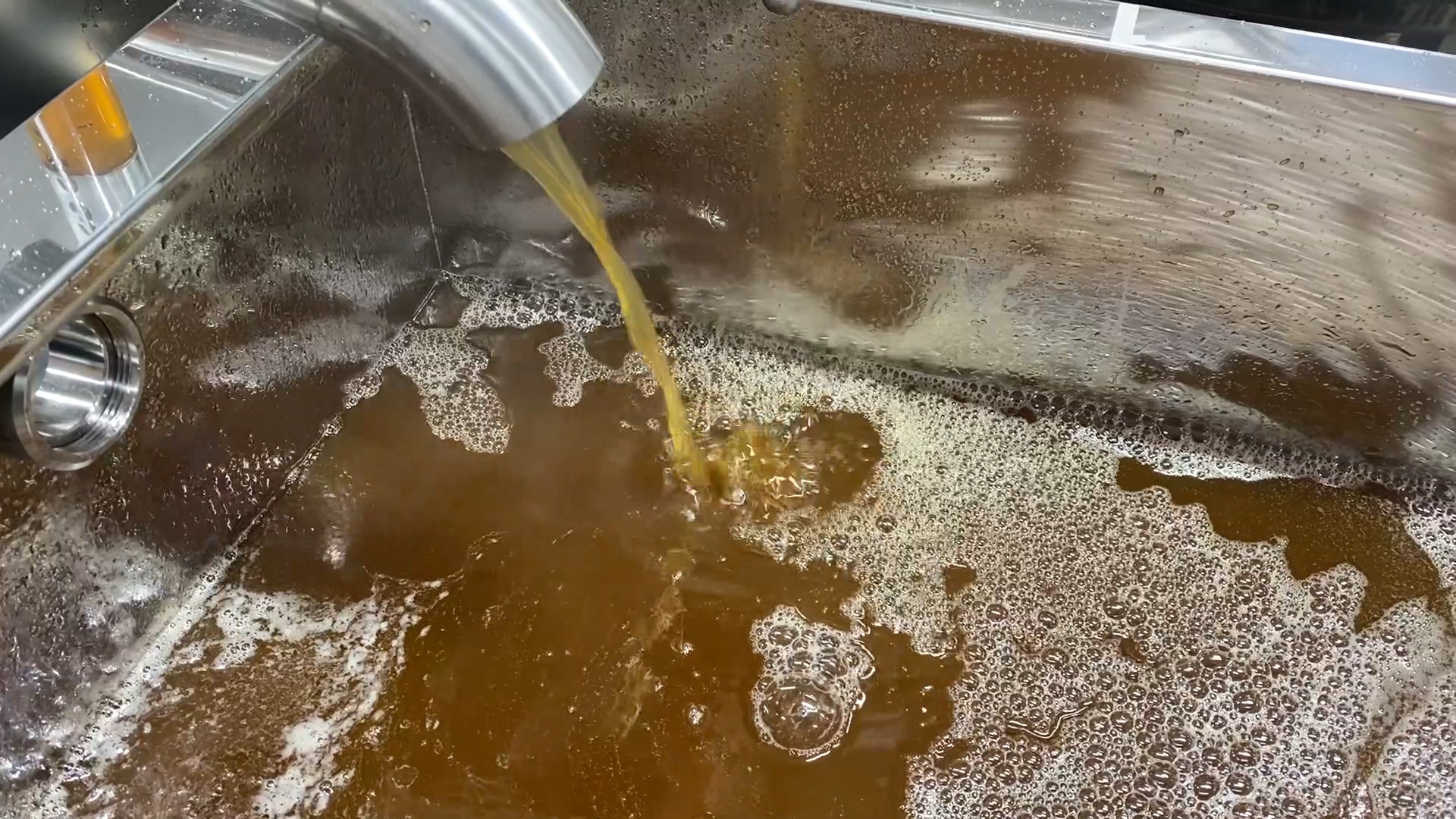Thirty to fifty gallons of sap makes just one gallon of maple syrup, and the weather factors into when that sap is harvested and even how it tastes.
Tasting the weather, in a way
If temperatures aren’t cold enough during the winter (the trees need lots of sub-freezing weather), the sap won’t have as much sugar. This produces a darker and less sweet–but more maple-flavored–syrup.
Cold conditions create a lighter syrup that usually results in a sweeter and better-tasting variety.
(Spectrum News)
The optimal conditions for sap to flow are when temperatures climb into the 40s by day and dip back down below freezing at night. That causes pressure changes within the tree that allows the sap to flow.
Maple syrup season typically runs from February through April, but the season peaks in March when most sugar makers harvest sap at the beginning of the month.
However, if temperatures get too warm too soon, trees will come out of dormancy, start budding and produce what’s called a green sap. This usually results in a bitter flavor and signals the end of the run.
If it’s too cold during the harvest, the sap slows down to a crawl.
Changing climate, changing harvest
According to the U.S. Department of Agriculture, a large portion of maple syrup producers say they’ve experienced earlier-than-normal tapping seasons in recent years.
Because of a warming climate, the sugar maple tree population could endure noticeable losses over time, especially in the southernmost areas. The more robust sap flow areas could shift farther north over the coming decades.
Researchers discovered that seasonal weather shifts tied to climate change affect the quality and quantity of the sugar yields.
For instance, an out-of-the-ordinary winter thaw might cause sap to run sooner than normal. Then, this process slows down again once the cold returns.
A prolonged period of mild weather can cause microbial growth within the trees, making a sluggish and lighter sap flow. In addition, it can create a dry or plugged up tap hole.

(Spectrum News)
The rule is, when the sap flows, it’s time to collect. Even if it’s an early sap run, it’s better to take up the risk of collection than get left out of the flow later on.
Some farms attempt multi-tapping to work around issues, but this method doesn’t always help the problem. The seemingly simple tapping task turns into a game of skill, anticipation and shifting methods during unusual temperature swings.
Sap farmers try to navigate these changes carefully to avoid low yields and instability in sap supply to the markets.
Stack up the flapjacks
Pure maple syrup is a natural and nutritious sweetener, so it’s a smart choice to use for topping off pancakes, ice cream or as an addition to family recipes.

(Spectrum News)
Canada produces the majority of the world’s maple syrup, harvesting a record 17.4 million gallons in 2022. The U.S. produced about 5 million gallons that year. Vermont led the way with 2.5 million gallons and New York State came in second at 845,000 gallons.
Our team of meteorologists dives deep into the science of weather and breaks down timely weather data and information. To view more weather and climate stories, check out our weather blogs section.

